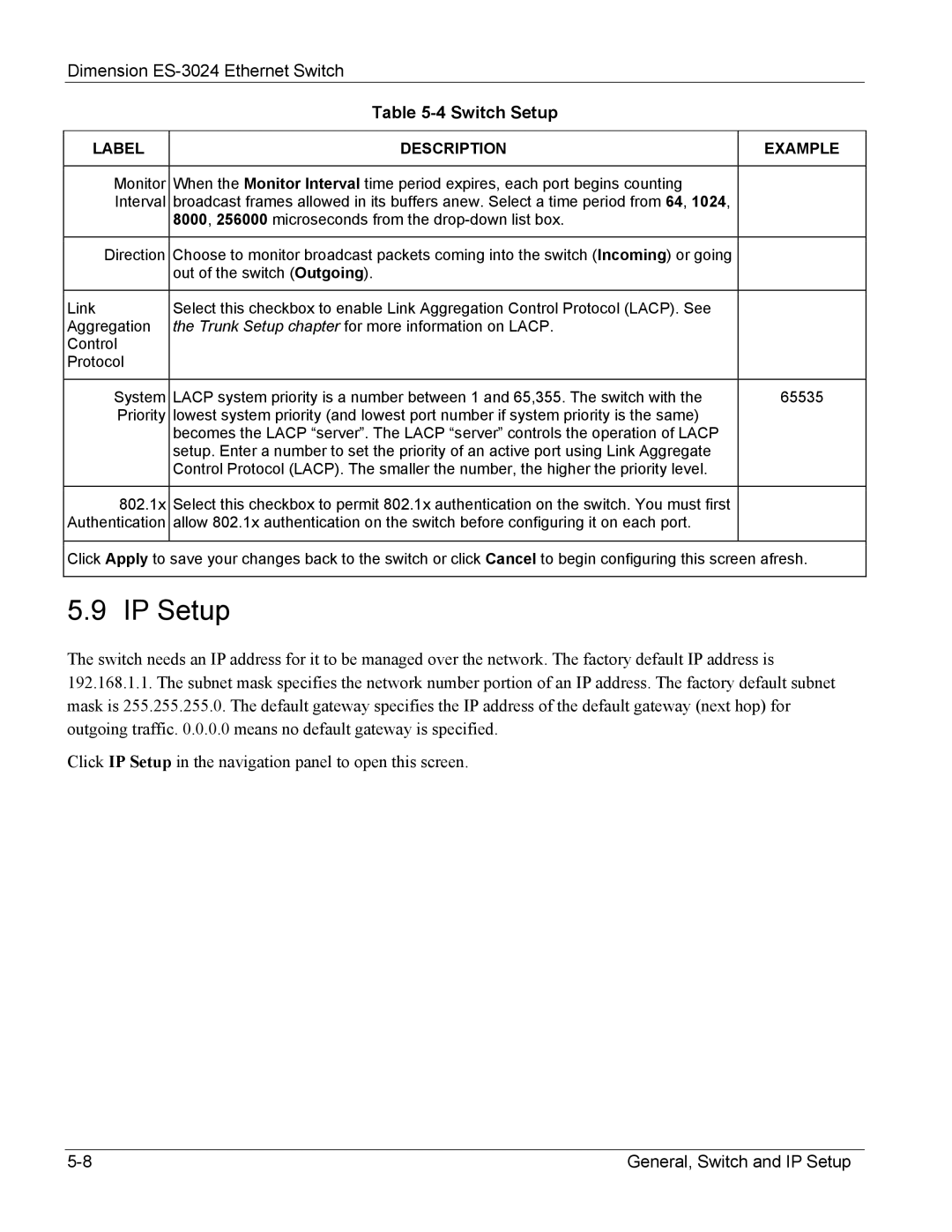
Dimension
Table 5-4 Switch Setup
LABEL | DESCRIPTION | EXAMPLE |
|
|
|
Monitor | When the Monitor Interval time period expires, each port begins counting |
|
Interval | broadcast frames allowed in its buffers anew. Select a time period from 64, 1024, |
|
| 8000, 256000 microseconds from the |
|
|
|
|
Direction | Choose to monitor broadcast packets coming into the switch (Incoming) or going |
|
| out of the switch (Outgoing). |
|
|
|
|
Link | Select this checkbox to enable Link Aggregation Control Protocol (LACP). See |
|
Aggregation | the Trunk Setup chapter for more information on LACP. |
|
Control |
|
|
Protocol |
|
|
|
|
|
System | LACP system priority is a number between 1 and 65,355. The switch with the | 65535 |
Priority | lowest system priority (and lowest port number if system priority is the same) |
|
| becomes the LACP “server”. The LACP “server” controls the operation of LACP |
|
| setup. Enter a number to set the priority of an active port using Link Aggregate |
|
| Control Protocol (LACP). The smaller the number, the higher the priority level. |
|
|
|
|
802.1x | Select this checkbox to permit 802.1x authentication on the switch. You must first |
|
Authentication | allow 802.1x authentication on the switch before configuring it on each port. |
|
|
|
|
Click Apply to save your changes back to the switch or click Cancel to begin configuring this screen afresh.
5.9 IP Setup
The switch needs an IP address for it to be managed over the network. The factory default IP address is 192.168.1.1. The subnet mask specifies the network number portion of an IP address. The factory default subnet mask is 255.255.255.0. The default gateway specifies the IP address of the default gateway (next hop) for outgoing traffic. 0.0.0.0 means no default gateway is specified.
Click IP Setup in the navigation panel to open this screen.
General, Switch and IP Setup |
